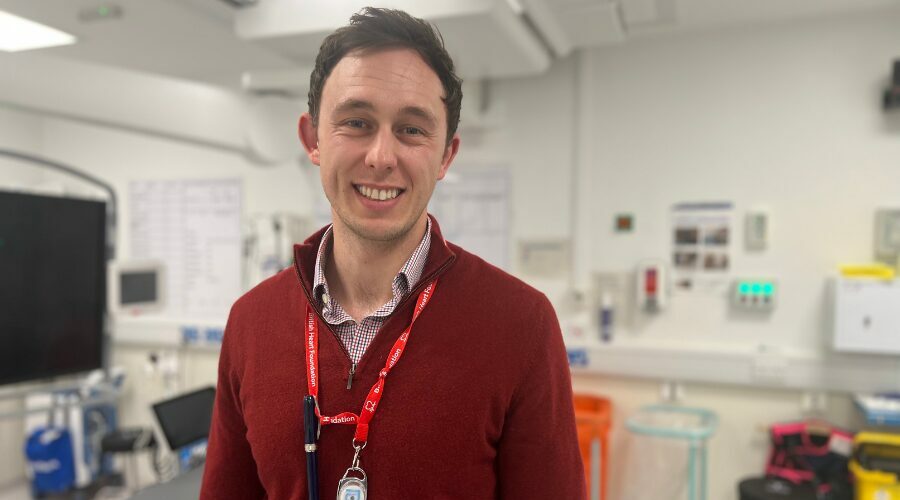
Spotlight
New way of monitoring pacemakers being trialled at Musgrove Park Hospital
A groundbreaking new way of monitoring a patient’s pacemaker is being trialled at Musgrove Park Hospital, thanks to the research of a cardiology doctor at the trust.
The project is being led by Dr Stewart Brown, one of our cardiology registrars based at Musgrove, as part of his PhD in cardiology research, which is supervised by consultant Dr Guy Furniss.
Patients are generally fitted with a pacemaker to help support their heart rhythm if a cardiologist detects that their heart beats too slowly because of weakened muscles.
Stewart is almost at the end of his third year at Musgrove, but he’s been in the South West for around a decade, having moved from Northern England, where he completed his foundation doctor training.
The project began five years ago when the cardiology team at Musgrove began to give patients who have pacemakers a small monitoring device for when they return home from hospital.
Stewart explains why he chose this area of research: “The more that people depend on their pacemaker, the more detrimental it can be to their health, and it can cause heart failure – something that’s been well known for quite some time,” he says.
“Most people with pacemakers tend to be in their 70s or 80s, and they might just put this down to ageing, but by using the data we’re able to detect it early and bring people in for treatment to make them feel better.
“Our cardiology service at Musgrove Park Hospital is unique in that rather than bringing patients into hospital to check their pacemaker, we send them home with a little device that they put next to their bed.
“When they go to sleep, the device runs a number of checks around midnight, and all that data is fed to us, which helps us to predict whether a patient’s heart is failing in response to a pacemaker.
“In many ways this is essential screening, where signs of potential heart failure can be detected early so the patient can have treatment before there’s a significant decline in their condition.
“Therefore, if this problem is detected early then we’re preventing people from coming into hospital with heart failure, and we know that if someone is dependent on their pacemaker all the time it can make them breathless, so we can work hard to improve their symptoms.”
Stewart was originally planning to undertake a Masters degree, but following a literature research, he realised that nobody else in the world had done this sort of research before.
“I made the decision, together with my supervisor Guy Furniss, to collaborate with the University of Exeter, and they used some of our data to develop a number of machine learning models with an AI approach,” Stewart continues.
“We’re one of the first organisations to use this new technology for heart patients, as although we’ve used this sort of equipment in defibrillator monitoring, it’s never happened in pacemaker patients.
“In effect, we’ve taken a tool that’s been well researched and we’ve looked to use it for this very different cohort of patients.
“And we’ve just presented this work at a conference in Berlin and our global colleagues in the cardiology field were really interested as this hadn’t been done before – a huge accolade for Musgrove.
“There was a really positive reaction too, and a lot of interest from industry, as well as from other cardiologists who’ve seen some of the work that has been done.
“Our aim over the next 18 months or so is that if we’re able to develop a predictive tool that will give patients an alert if they’re developing heart failure, then our cardiology team can give them a call to say we’ve noticed something not right in the pacemaker, and that their heart may be struggling. We’d invite them into hospital, possibly change their medication, and we can even amend their prescription to a more complex one.
“This will make pacing safer as there’s a growing amount of evidence that says some patients don’t respond well to pacemakers and we don’t know how to predict that at the moment, so this remote monitoring makes it much safer, and also enables us to respond to a patient who has a problem with their pacemaker.
“We now look forward to including more patients in the study, as well as combining our efforts with other centres in the country to see whether we find the same patterns as in their patients.”
